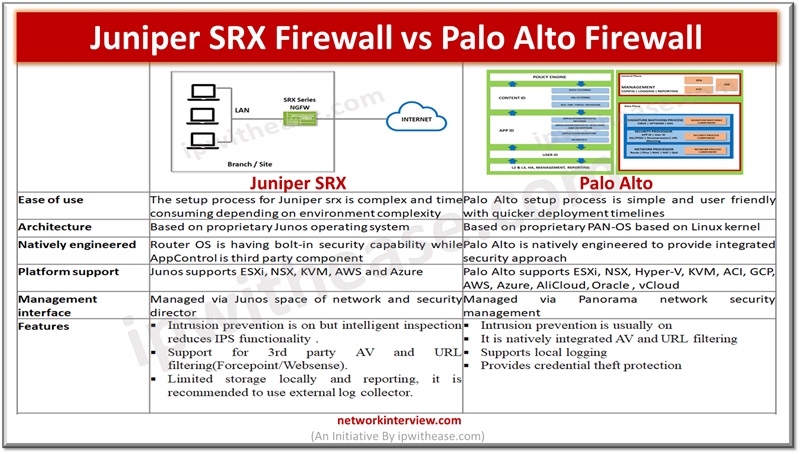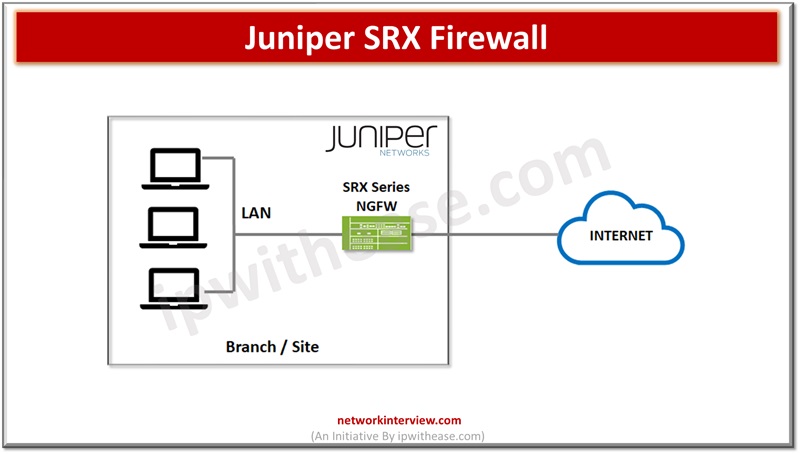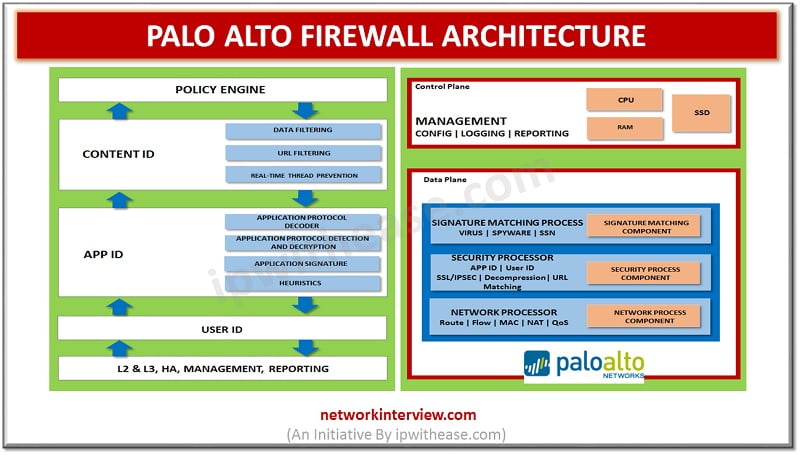
Juniper SRX Firewall vs Palo alto Firewall
Application aware security is the need of the IT enterprises. Companies are replacing the old and outdated firewalls with Next generation firewalls which are application aware and this evolution can be attributed to web 2.0 where web-based applications and services are getting predominant in the IT landscape. While migrating or moving to another firewall platform it is important to investigate how to utilize and implement new features as well as ease of implementation, use and cost.
Today we look more in detail about comparison between next generation firewalls such as Juniper SRX firewall and Palo Alto firewalls, how they are different from each other, and their features.
Juniper SRX Firewall
Juniper SRX is a next generation firewall departure from ScreenOS based firewalls. SRX provides scalability and scalable services. Scaling under load is a typical requirement of firewalls including other services such as stateful firewall, VPN, NAT, UTM and intrusion prevention. The SRX branch series of firewalls are meant for small and large office locations where the firewall is typically deployed at network edge and in data center series of SRX designed to provide scaling services.

Related: How to configure Juniper SRX Firewall? Step by Step Guide
Features of Juniper SRX Firewall
- Users can limit traffic and shape bandwidth based on application information and contexts
- Ability to route traffic over different WAN links
- More accurate and granular security policies
- Prevent users to download ransomware hidden within encrypted traffic
Palo Alto Firewall
Palo Alto detects known and unknown threats such as encrypted traffic with intelligence. PAN-OS is software which runs Palo Alto networks having key technologies built into PAN-OS as a native feature – App-ID, content-ID, device-ID, and User-ID. Policies and rules can be applied uniformly across all assets. Anomalous user behaviour across enterprise and consistently protect all business applications and allow to grant leased privileged zero trust policies.
Palo Alto can access TLS/SSL encryption and feature of inspection for traffic monitoring to ensure malicious traffic in encrypted disguise enters your network. Customers have access to granular controls for application, tunnel monitoring, QoS services , integrated DNS, usage-based policy configuration and mobile device management.

Features of Palo Alto Firewall
- Consistent protection from threats in real time, full visibility, and traffic control
- User access filtering and assessment in intelligent manner
- Data loss prevention with outbound traffic exfiltration
Comparison: Juniper SRX Firewall vs Palo alto Firewall
Below table summarizes the points of comparison between the two types of firewalls:
FUNCTION | JUNIPER SRX FIREWALL | PALO ALTO FIREWALL |
| Ease of use | The setup process for Juniper srx is complex and time consuming depending on environment complexity | Palo Alto setup process is simple and user friendly with quicker deployment timelines |
| Architecture | Based on proprietary Junos operating system | Based on proprietary PAN-OS based on Linux kernel |
| Natively engineered | Router OS is having bolt-in security capability while AppControl is third party component | Palo Alto is natively engineered to provide integrated security approach |
| Platform support | Junos supports ESXi, NSX, KVM, AWS and Azure | Palo Alto supports ESXi, NSX, Hyper-V, KVM, ACI, GCP, AWS, Azure, AliCloud, Oracle , vCloud |
| Management interface | Managed via Junos space of network and security director | Managed via Panorama network security management |
| Features |
|
|
Download the comparison table: Juniper SRX Firewall vs Palo alto Firewall
Continue Reading:
Palo Alto vs Fortinet Firewall: Detailed Comparison
Palo Alto vs Checkpoint Firewall: Detailed Comparison
Tag:comparison, Juniper SRX, PaloAlto



